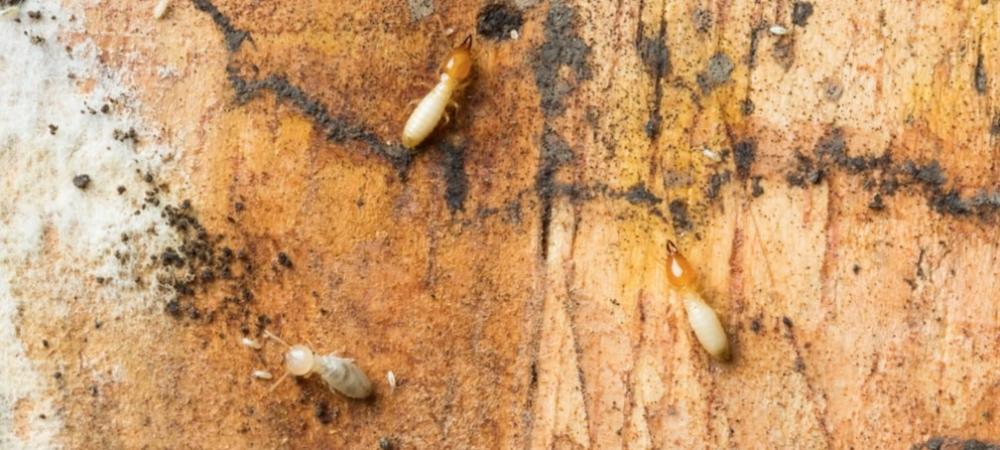Everything You Need to Know About Termites in Houston

Termites are nasty little critters that can invade your home and leave you with costly damage. Unfortunately, Texas is at high risk of termite damage, making it very important to understand the termites that live here and the best ways to prevent damage. Termites cause five billion dollars of damage inside the US every year and can cause major damage to your home before you even realize they’re there. Don’t know much about termite control methods for the Houston area? We’ve got you covered.
Q: What do termites look like?
A: Termites can look many different ways depending on their type and age, making it hard for some people to identify them. In general, here are some basic characteristics:
- Size: 1/8th of an inch to 1 inch
- Color: white, brown, or black
- Shape: three body segments that aren’t distinct
- Appearance: Straight antennae
- Body: Two sets of wings that are the same length
Termites are sometimes mistaken for ants. Note that ants have curved antennae, two sets of wings that are different lengths, and three distinct body segments.
Q: What types of termites live in Texas?
A: The termites most commonly seen in Texas are the subterranean and drywood ecological groups of termites. Subterranean termites live in the soil, building their homes underground beneath aboveground sources of food and moist areas. On the other hand, drywood termites do not need soil or water sources; they are sustained from the targets they choose, alone.
Q: When are termites most active?
A: Termites swarm in the warm days following rain and are also attracted to warm buildings in the winter. The spring is an especially active time for termites because it is when they mate and form new colonies. However, different termites are more active at different times of the day or year:
Subterranean termite species swarms:
- February - May in the morning
- March - June during the day
- Fall mornings
Drywood termite species swarms:
- Spring nights
- April - July at night
- Summer days
- Formosan termites (also present in Texas): Late spring nights
Q: How quickly can termites do damage?
A: It takes 2-3 years for a termite colony to become large enough to swarm, but once they do, it takes an average sized colony only six months to eat through one foot of a 2x4. This may not sound like much, but they make tunnels in the surrounding wood, weakening the wood and potentially the structure of your house. It is important to tackle termite damage as soon as you suspect it!
Q: What attracts termites?
A: Many things! The experts at EnviroCon are happy to provide free inspections, but these are the most common attractants for termites:
- Moist areas
- Wooden housing frames
- Stacks of abandoned wood
- Cardboard boxes containing paper
- Roofs with missing tiles
- Skirting boards
- Wooden furniture
- Cotton fabrics
- Old tree stumps and mulch
- Fences and decks
Q: How do I spot the presence of termites?
A: Subterranean termites are most easily noticed by their large flying swarms, as well as the presence of mud tubes (lines of mud that look almost like veins on wood and other surfaces). Drywood termites are larger, but their colonies are much smaller and harder to notice. However, there are signs:
- Small swarms
- Groups of discarded same-size wings
- Small mounds of fecal pellets
- Spongy wood--press your thumb on it and see if it gives a little
- Cracked paint
- Sagging floors
- Mazes on the outside of the wood
Q: Is there any way to prevent termites from picking my home?
A: Thankfully, there is! Here are the best ways to prevent termites in your home. You can:
- Avoid creating moist places and leaving wood on the ground
- Treat wood with protection
- Keep up with maintenance around your home
- Reduce the amount of wood near your home
- Use screens on your attic and foundation walls
- Don’t leave cardboard boxes filled with paper sitting around
- Make sure your pipes aren’t leaking and creating moist environments
Q: What type of treatment should I use?
A: This depends on the type of termite, making it important to have a professional assess the situation in your home before you decide to handle it yourself. Here at EnviroCon, our treatments are non-fumigation, meaning there are no heavy fumigants and there is no need to leave your home.
If you are wondering if you have termites, give us a call for a free inspection! We provide same and next-day service, as well as a guaranteed one year warranty. It’s your home--we want to make sure we did our best to keep your family safe!